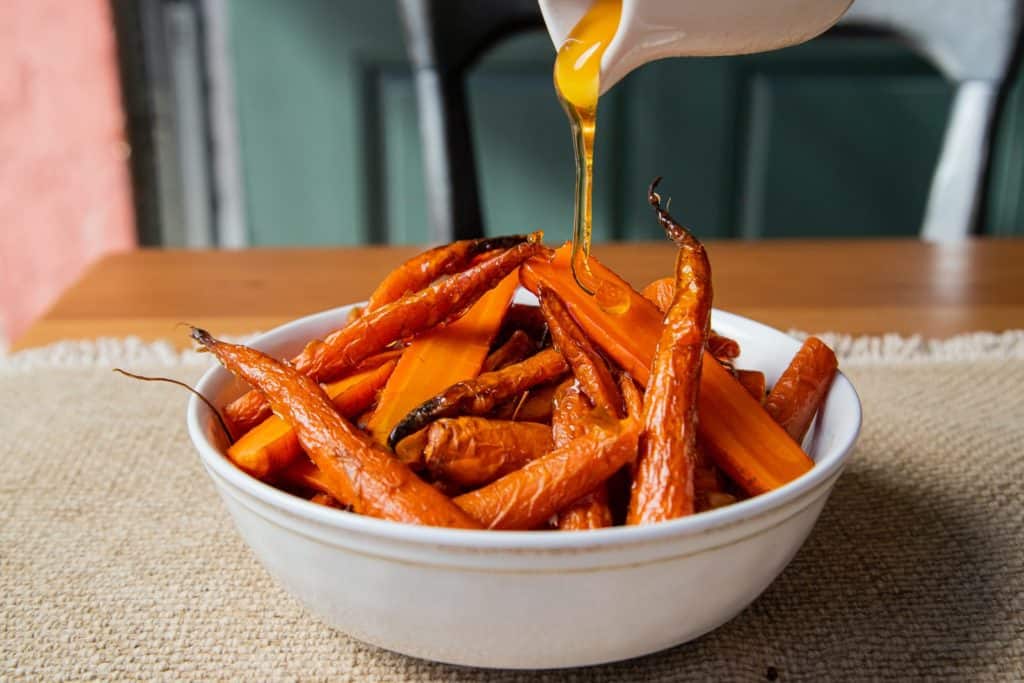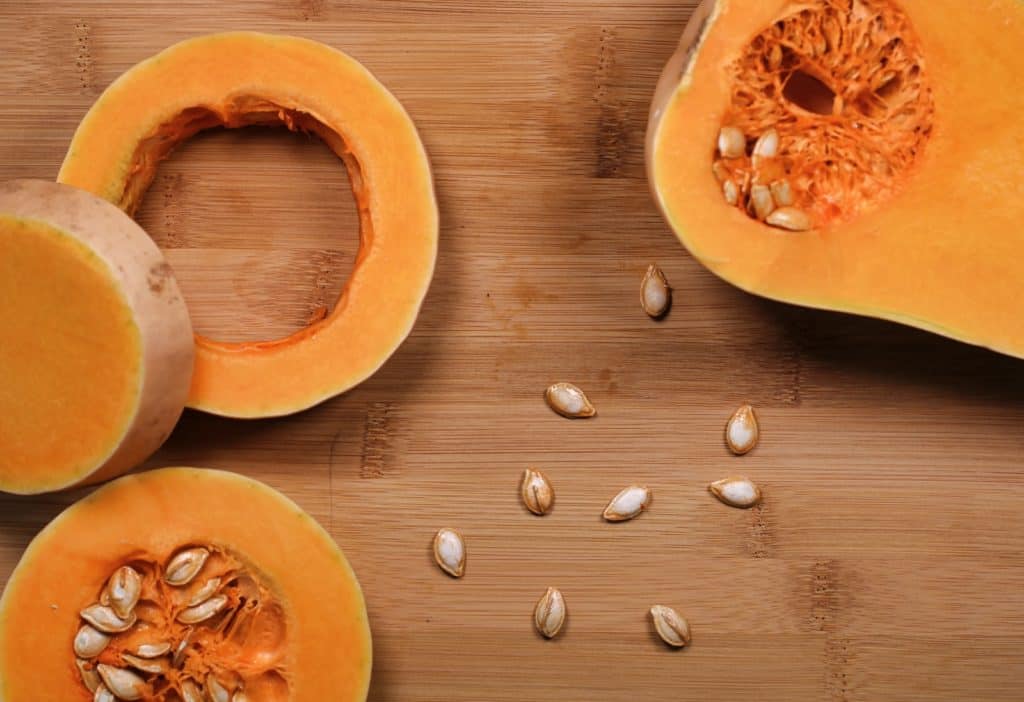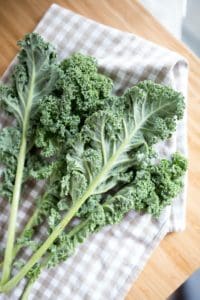This post may contain affiliate links. If you click one and make a purchase, I earn a small commission at no extra cost to you. It helps support the site so I can continue to offer great content to you!

Each season offers a fresh start; a chance to reflect, refresh, and reset. For me, this means reviewing my goals, updating my wardrobe and home decor, and changing my eating habits. There are several reasons why I believe that eating seasonally is highly beneficial and I have written a whole blog post about this. To put it briefly, fruits and vegetables that are in season are more nutritious, cost-effective, and fresher. Here are the best winter season vegetables and fruits to add to your diet this winter.
Winter season vegetables and fruits
Winter is the dormant season. If you live in an area where temperatures are below 0C or 32F for the majority of the winter months, the reality is that you cannot really grow anything. Produce farmers have greenhouses, also known as high tunnels that allow them to continue farming fruits and vegetables throughout winter. With that said, they must still select products that can sustain the temperatures in their area.
When speaking of seasonal produce, we also consider fruits and vegetables that are harvested in the fall but that can be stored to remain fresh for months to come such as potatoes, squash, carrots, and onions. Here is a general list of fruits and vegetables that are considered in-season from November through March either because they grow well during this time or can be stored for a long period.
- Arugula
- Beets
- Broccoli
- Brussel sprouts
- Cabbage
- Carrots
- Cauliflower
- Clementines
- Endives
- Garlic
- Grapefruits
- Green onions
- Kale
- Kiwis
- Leeks
- Lettuce
- Lemons
- Mushrooms
- Oranges
- Parsnips
- Pears
- Potatoes
- Radicchio
- Shallots
- Spinach
- Winter squash

Favorite winter season vegetables side dish recipes
1. Garlic herb roasted potatoes, carrots, and zucchini
This is a delicious yet simple side dish recipe for the winter months. We love to make this with slow-roasted beef or chicken. It makes for a comforting and filling dinner that the entire family enjoys.
Nutritional benefits:
Potatoes are high in vitamin C and B6. They also contain a large amount of potassium. The skin of the potatoes is where potassium is mostly found and is also where fibers are concentrated. Roasting potatoes is a great option for keeping and eating the peel.
Tips: Use parchment paper on your baking sheet for less chance of the food sticking to the baking sheet and for easier clean-up. If you are looking for a new baking sheet, this is my absolute favorite baking set. I know it’s pricey, but it is worth it! You can also buy each item individually.
2. Roasted brussels sprouts salad
We have made this recipe several times, especially during the early winter months (November and December). The cranberries make it a great holiday side dish. One modification I make is to skip the chickpeas because my son and I are allergic. Instead, I add a few tablespoons of pumpkin seeds. It is delicious!
Nutritional benefits:
Brussel sprouts are rich in vitamins C and K. They provide folate, calcium, iron, and potassium. They are rich in glycosinolate glucobrassicin which is a compound that could help prevent damage to your DNA and therefore could prevent certain cancers.
3. Garlic parmesan roasted carrots

This recipe adds a nice touch to simple roasted carrots. I have always found steamed carrots to be quite boring. This recipe made me incorporate carrots as a side dish into our diet more often. I’ve also served it at a Christmas dinner and was asked for the recipe by other family members.
Nutritional benefits:
Carrots have extremely high amounts of vitamin A. Half a cup of carrots provides you with 73% of your daily recommended dose. They also contain small amounts of vitamins C and K, potassium, and calcium. Carrots are high in antioxidants, are great for your eyes, can lower your cancer risk, and improve your heart health.
Tip: for the best-tasting parmesan, buy a block of parmesan and shred it yourself. It is a game-changer. This is the tool that I have to grate cheese. It is small and dishwasher safe.
4. Baked parsnip fries
Okay, I must admit I have not tried this recipe yet. It’s been on my list and I will try it for sure this season. I will update this post once I do. However, let’s admit that this sounds like a brilliant way to incorporate parsnip which is not a go-to veggie normally for our family.
Nutritional benefits:
Parsnips contain vitamins B6, C, E, and K. They are rich in folate and also provide magnesium, thiamine, phosphorus, and zinc. They are a great source of fiber helping promote regularity and strong digestive health. They contain antioxidants that can enhance your immune functions and optimize your health.
5. Mashed butternut squash
You might have known you can mash pretty much any root vegetables but did you know about butternut squash? I really enjoy this side. However, I will admit it is a little too much butternut squash for some of our family members. Therefore, I use half the amount of squash and potatoes for the remaining quantity. My family enjoys it more this way and we still benefit from the vitamins A and C found in this winter season vegetable.

Nutritional benefits:
One serving of butternut squash provides more than 100% of your daily dose of vitamin A and nearly 40% of vitamin C. It also supplies you with magnesium, potassium, and calcium. Butternut squash is a water-rich vegetable great for maintaining hydration. It supports your immunity, is great for your eyesight, and has been linked to healthy heart function.
Tip: If you are struggling to make smooth and creamy mashed vegetables with a regular masher, use an immersion blender like this one. It’s fast and they taste delicious!
6. Garlic butter kale rice
Kale doesn’t just go in salads. My family is not a fan of raw kale. However, they love both spinach and kale when they are cooked. They will eat them simply with butter and salt on them or in a side dish such as this delicious rice recipe. We eat a lot of rice and it can get boring if you don’t switch things up. Give this recipe a try if you are ready for a change.
Nutritional benefits:
Kale is filled with vitamins A, C, and K. It is rich in folate which is key for brain development. It also contains several minerals such as phosphorus, potassium, calcium, and zinc, This veggie can help lower cholesterol, and prevent some forms of cancer.

In conclusion…
I hope this article inspired you to try some new food this winter. Don’t hesitate to be creative and have fun with your recipes. You might just be surprised by what becomes a new family favorite. Let me know which winter season vegetable is your favorite and how you like to prepare it.
Bon Appetit!
Cat xx